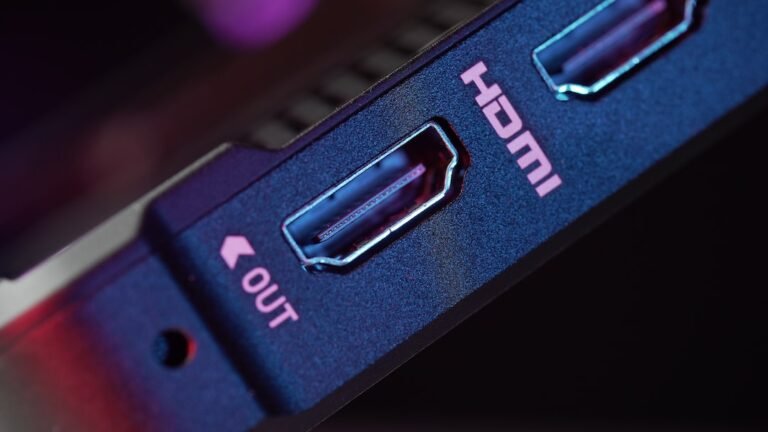Introduction
Are you tired of experiencing slow internet speeds and dead spots in your home? Do you have multiple devices that need a stable and reliable connection? If so, then managing devices on a mesh network might be the solution you’re looking for. In this article, we’ll explore tips and best practices for efficiently managing devices on mesh networks.
Imagine a scenario where you’re working from home, browsing the web on your laptop, streaming a movie on your smart TV, and your children are playing online games on their tablets. With a traditional Wi-Fi setup, you might experience lagging, buffering, and unreliable connections. This is where mesh networks come in.
Mesh networks are designed to provide seamless whole-home coverage by using multiple access points, or nodes, to ensure a strong and reliable Wi-Fi signal in every corner of your home. But how do you effectively manage devices on a mesh network to optimize performance? Let’s find out!
Understanding Mesh Networks
Before we dive into tips and best practices, let’s briefly understand how mesh networks work. In a traditional Wi-Fi setup, you have a single router acting as the central access point. However, in a mesh network, you have multiple access points, or nodes, placed strategically throughout your home.
These nodes communicate with each other to create a seamless and robust network. When you connect a device to a mesh network, it will automatically and intelligently switch between nodes, ensuring that you always have the best possible connection.
Tip 1: Positioning Your Nodes
One of the key factors in efficiently managing devices on a mesh network is the placement of your nodes. To ensure optimal coverage and performance, follow these tips:
Strategic Placement: Place your nodes in central locations within your home to ensure even distribution of Wi-Fi signals. Avoid placing them near walls, obstructions, or other sources of interference.
Distance and Line of Sight: Position your nodes within a reasonable distance of each other to allow for effective communication. If possible, maintain a line of sight between the nodes to minimize obstacles and maximize signal strength.
Testing and Adjusting: Test the Wi-Fi signal strength in different areas of your home and make adjustments as needed. You may need to experiment with the placement and positioning of your nodes to achieve optimal coverage.
By strategically positioning your nodes, you can ensure a strong and reliable Wi-Fi signal throughout your home, minimizing any dead spots or areas of weak coverage.
Tip 2: Configuring Device Prioritization
In a household with multiple devices, it’s common to have some devices that require priority access to the network. For example, you may want to prioritize your work laptop or gaming console over other devices.
Most mesh network systems allow you to configure device prioritization settings. By prioritizing specific devices, you can ensure that they receive optimal bandwidth and network resources when needed. This could be especially useful for bandwidth-intensive activities like gaming, streaming, or video conferencing.
When configuring device prioritization, consider the following:
Identify Critical Devices: Determine which devices require priority access based on their importance and resource needs. This could include devices used for work, entertainment, or other critical activities.
Access Control: Configure access control settings to prioritize these devices. This can usually be done through the mesh network’s mobile app or web interface. Assign higher priority levels to the devices that require it.
Adjustments as Needed: Monitor network performance and make adjustments to device prioritization settings as needed. If you notice any devices experiencing slowdowns or lag, consider adjusting their priority levels accordingly.
By configuring device prioritization, you can ensure that your most important devices receive the network resources they need, delivering a smoother and more reliable experience.
Tip 3: Utilizing Band Steering
Mesh networks often support both 2.4 GHz and 5 GHz frequency bands. The 2.4 GHz band offers longer range but lower speeds, while the 5 GHz band provides faster speeds but shorter range. To efficiently manage devices, take advantage of band steering.
Band steering is a feature that automatically assigns devices to the most appropriate frequency band based on their capabilities and network conditions. This helps optimize device performance and reduce congestion.
To make the most of band steering:
Enable Band Steering: Check if your mesh network system supports band steering and ensure that it is enabled. This will allow devices to connect to the most suitable frequency band automatically.
Device Compatibility: Keep in mind that not all devices support both 2.4 GHz and 5 GHz bands. Ensure that your devices are compatible with the band steering feature.
Network Monitoring: Regularly monitor your network to ensure that devices are connected to the appropriate frequency band. Most mesh network systems provide tools and information to help you track this.
By utilizing band steering, you can ensure that your devices are connected to the best possible frequency band, maximizing their performance and enhancing your overall network experience.
Conclusion
Managing devices on a mesh network can significantly improve your home Wi-Fi experience. By strategically placing nodes, configuring device prioritization, and utilizing band steering, you can optimize performance and ensure a seamless connection for all your devices.
Remember, experimentation and adjustments may be necessary to find the perfect balance for your specific home setup. With patience and the tips provided in this article, you’ll be well on your way to efficiently managing devices on your mesh network.
FAQ
| Question | Answer |
|---|---|
| I’m experiencing connectivity issues with my router. What should I do? | If you’re facing connectivity issues with your router, there are several troubleshooting steps you can take. Begin by rebooting your router, checking for firmware updates, and ensuring that it’s placed in an optimal location. For more detailed troubleshooting tips, refer to our article on router troubleshooting. |
| Are there any other ways to optimize my home network? | Yes, there are many other ways to optimize your home network. Some options include enhancing wireless router security, investing in gaming routers, exploring parental control routers, considering open-source router firmware, prioritizing VPN router security, integrating your network with a smart home, and upgrading to fiber internet routers. For more information on these topics, check out our related articles. |
Further Reading
Here are some additional resources to help you learn more about efficiently managing devices on mesh networks:
| Website | Description |
|---|---|
| https://dongknows.com/mesh-wi-fi-system-explained/ | Offers practical tips for mesh network setup |
| https://www.techtarget.com | Provides in-depth information on mesh networks and device management |
Remember to explore these websites for a more comprehensive understanding of managing devices on mesh networks.




